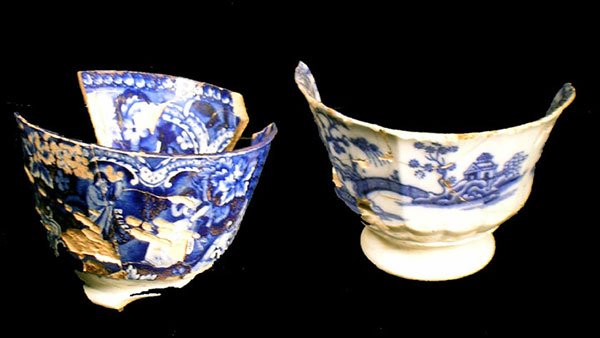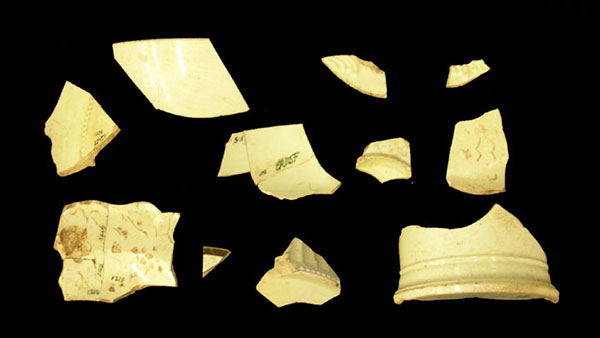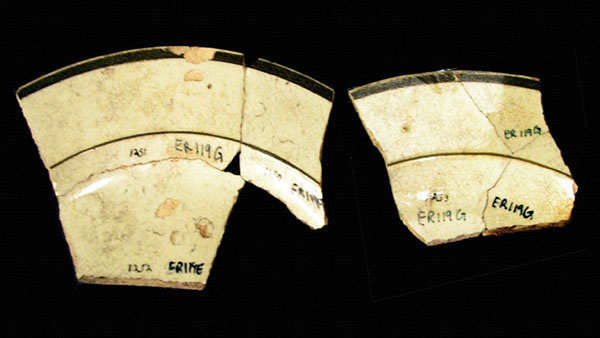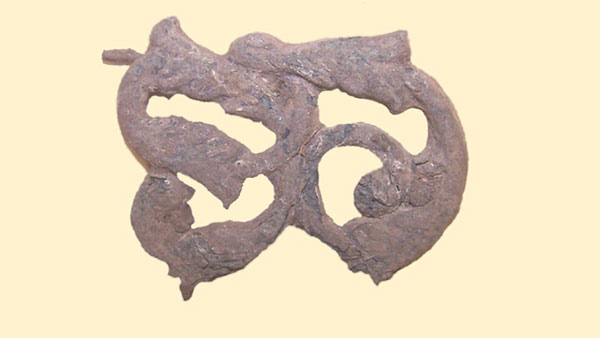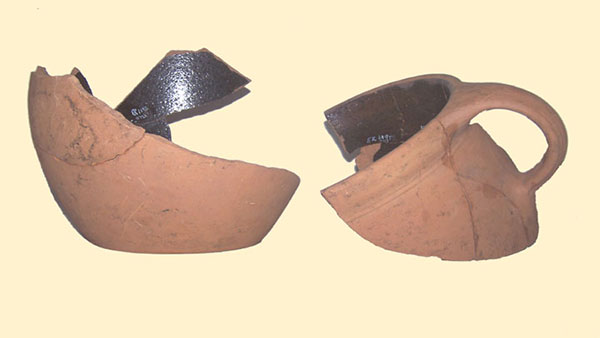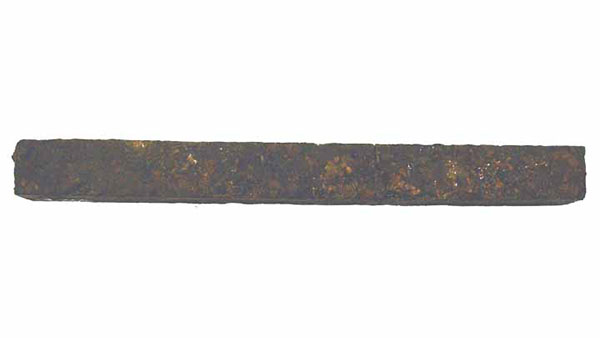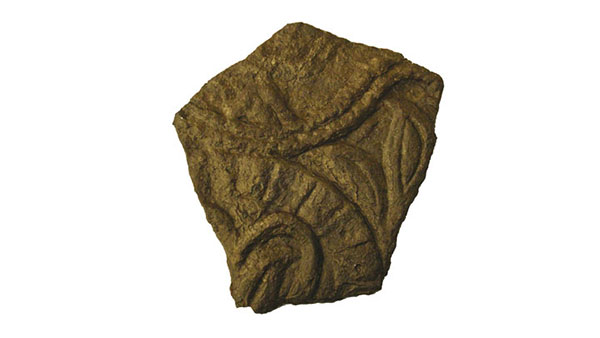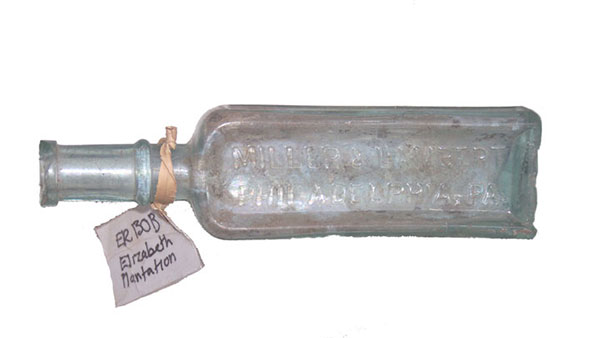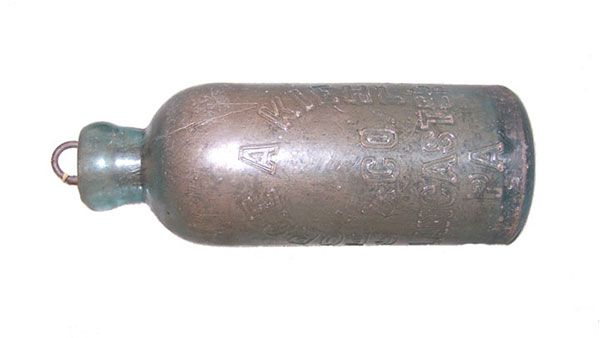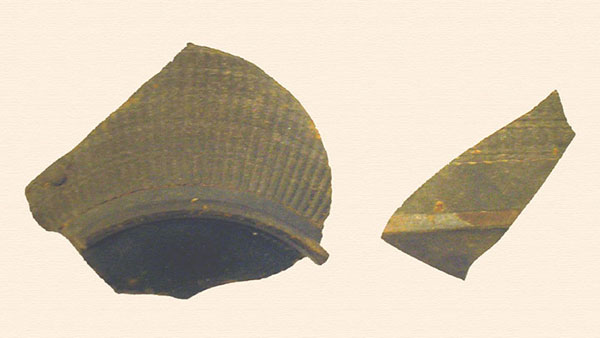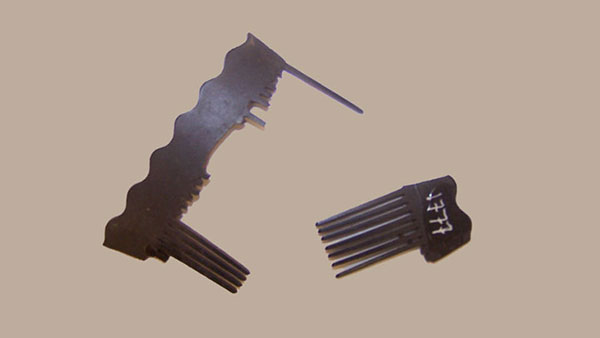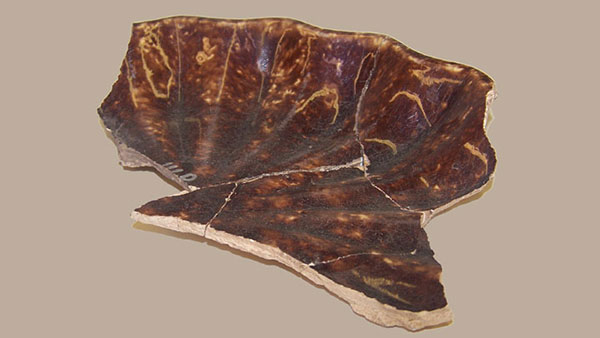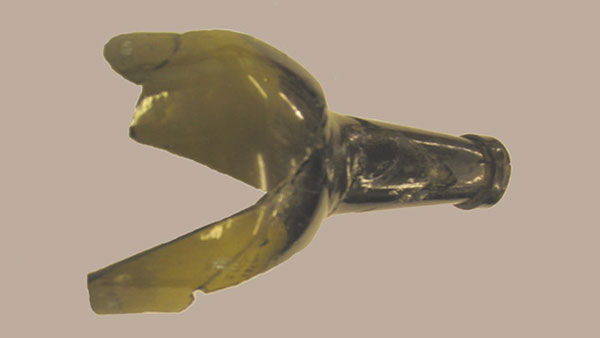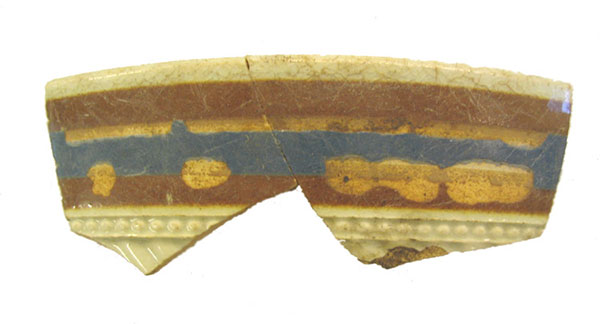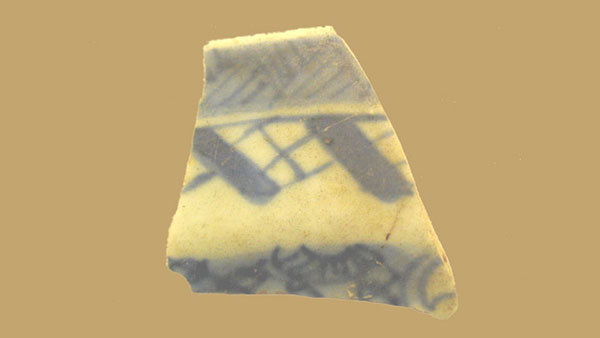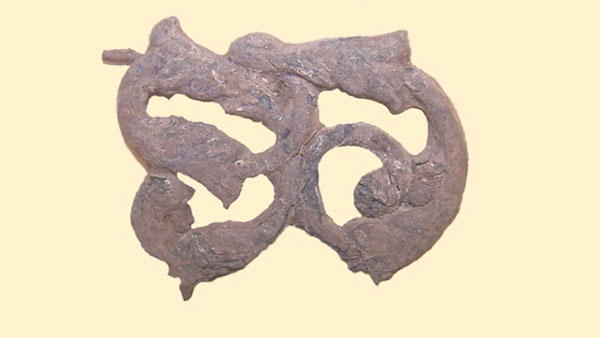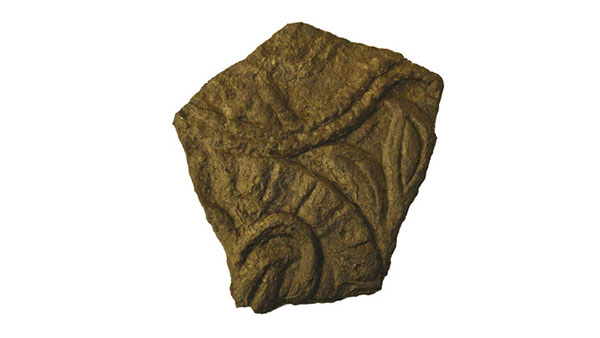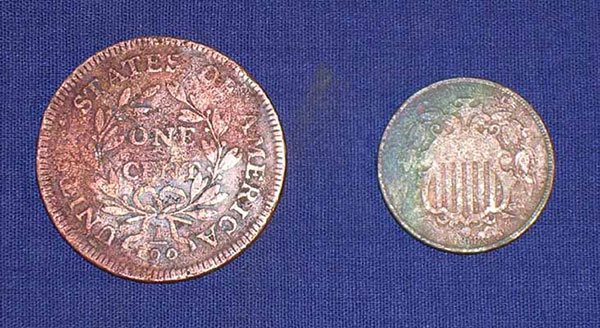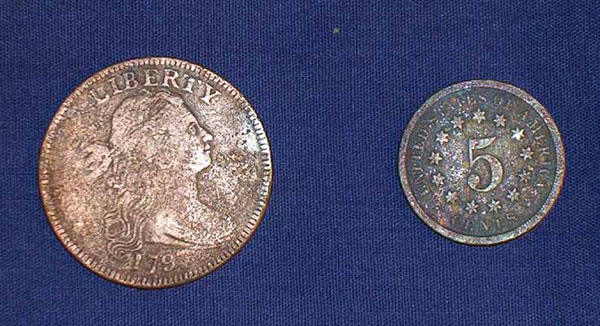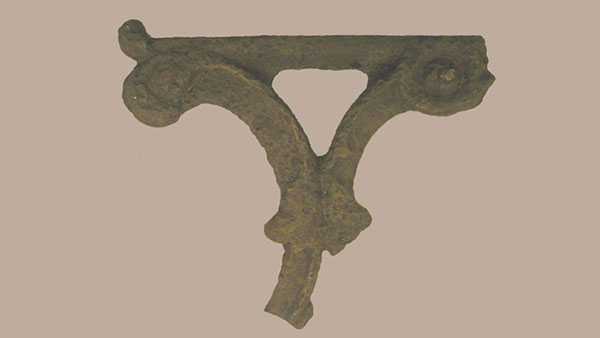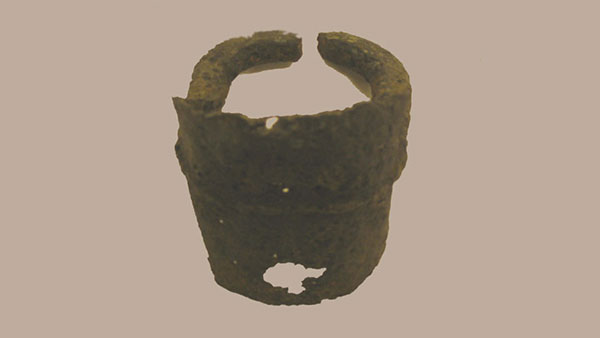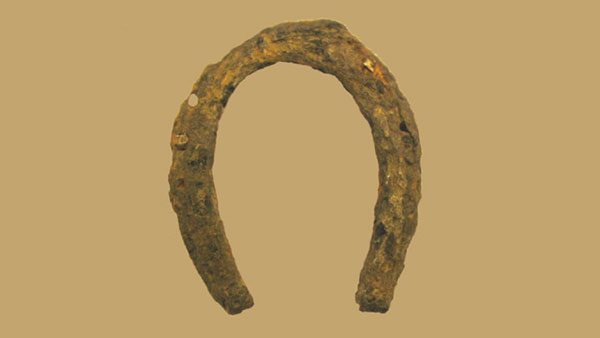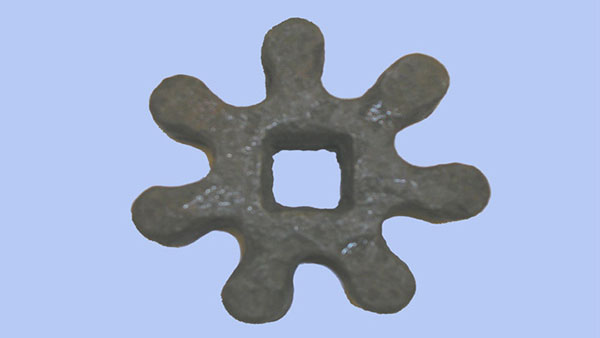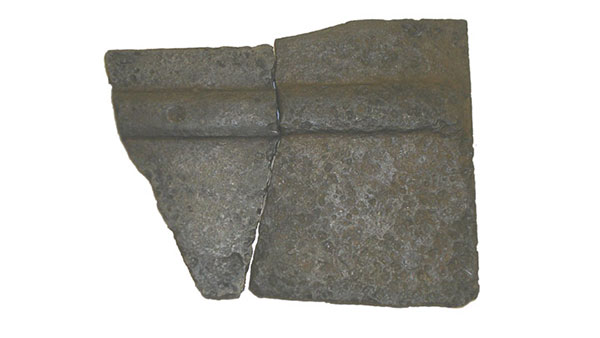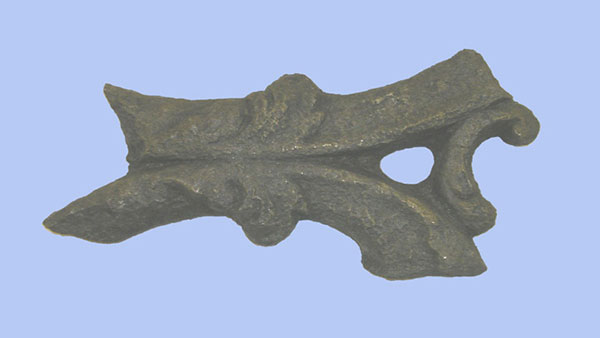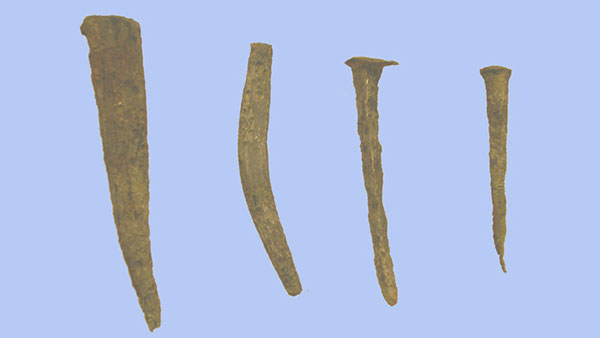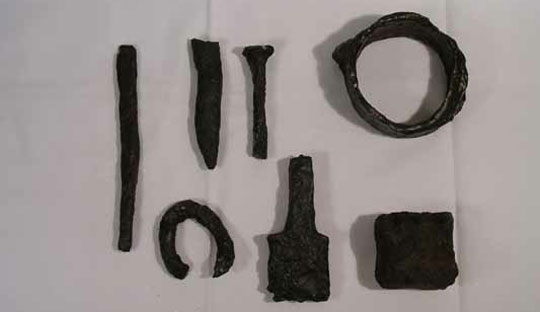Artifact Collections
Elizabeth Furnace Artifact Collection
The artifacts pictured below were recovered during excavations during the Fall 2005 archaeological field school at Elizabeth Furnace. When excavations at the Huber House (ca. 1746) were initiated, it was discovered that the furnace race, a stone walled channel which provided the high velocity flow of water necessary to power the water-wheel driven furnace bellows, had been originally located within 3 feet of the northeast corner of the Huber House. This waterway was a convenient place for people to dump trash and other waste, resulting in a particularly high density of artifacts. In just three months of excavation the field crew recovered more than 23,000 individual artifacts in this area. Researchers interested in conducting analysis or accessing the artifact database for comparative purposes are encouraged to download the artifact database from this site.
Analysis of this extensive collection is ongoing at Millersville University. Some initial indications of activity and function are already apparent. For example, we have been able to infer an unusual secondary use of the furnace race by the residents of the Elizabeth Furnace village. It appears that people living in and around the village utilized the furnace race for waste disposal. Artifacts recovered from the silt deposited in the channel indicate that chamber pots were emptied into the race regularly, presumably so that their contents could be flushed down-steam. In all, more than ten nearly complete chamber pots were found in the excavated section of the furnace race, as well as the rims and bases of several less complete examples. The density of chamber pots in this small area, and fact that the vessels were still largely intact, support the conclusion that this channel was a dumping ground for human waste as well as trash. This is just a simple example of how artifact analysis can contribute to our understanding of daily life at the site and the behaviors and practices of the people who lived and worked there.
Elizabeth Furnace Conserved Metals
Metal artifacts can be among the most interesting and unique items you recover from a site, however they also tend to be fragile and extremely delicate. Now most people would not think that a 1/2 inch thick piece of stove plate could be delicate, but they would be wrong. Apart from bone, shell, textile, and paper artifacts, which pose conservation challenges in their own right, metal artifacts are among the most difficult to conserve. Metals unlike other artifacts tend to corrode. Corrosion is the process of the metal's surface oxidizing. When metal is exposed to oxygen for any length of time, it begins to corrode. Thankfully, buried metal experiences this corrosion at a much slower rate due to the lack of exposure to oxygen. The true challenge begins once the metal is removed from the ground and exposed to air, which begins the corrosion process. For example in the case of iron, it begins to rust more rapidly when exposed to air. This is a big problem for us as conservators, for the more an artifact corrodes, the more of the original material of the artifact is loss. Therefore, we do everything in our power to reverse and prevent corrosion. Another difficultly in dealing with metals removing the dissolved salts in the artifact. Mineral salts that dissolve in water find their way into metal artifacts as rainwater and snow sink into the ground. These salts are not a problem so long as the artifact remains buried in a stable environment. Again, the difficulty arises once we remove the artifact from the soil. As the water that has worked its way inside the metal slowly evaporates, the minerals that were dissolved in it are left or deposited inside the metal. As the water evaporates the salt begin to crystallize expanding little cracks in the metal as they grow, weakening the artifact. Thus to ensure that a metal artifact is completely stable we must deal with the corrosion and salts.
The removal of the salts is a slow but simple process that works on the principle of diffusion. The metal artifact that is full of salt crystals is placed in a bath of distilled water. Since the distilled water has no salt, the water inside the artifact that contains salt will allow some of the salt to flow out of the metal and into the distilled water where the density of dissolved salt is less. The idea is that water will see to establish equilibrium, that is to say a constant level of salinity that is the same for both the metal and the water. The salinity of the water is measured periodically and when it gets above 100ppm, the water is dumped and replaced with fresh distilled water and the process is repeated. This is a lengthy process that often takes weeks to complete, but gradually the salt is leeched out of the metal.
The next challenge is to reverse the corrosion on the metal. To do this you essentially need to de-oxify the metal or reverse oxidize the metal. To do this you must break rust (FeO2) into (Fe and O2) so that only the base metal Fe is left. To do this we use a process call electrolytic reduction in which the oxidation or rust on one artifact is transferred to another piece of metal. The metal is put in a tank of 5% solution of sodium bicarbonate and electricity is passed through the artifact. The artifact is attached to the positive side and the piece of metal that is to receive the artifacts rust is placed on the negative side. The electricity breaks the bonds between the oxygen and the iron allowing the oxygen to bond with other oxygen molecules or the carbon atoms in the sodium bicarbonate solution, producing little bubbles. These newly formed molecules are attracted to the negative plate, where they oxidize the metal. This process also can take several weeks, but is often quite successful in restoring surface detail to metal artifacts.
Once the metal has been stabilized, we take measures to ensure that they will not deteriorate again. We paint each artifact with a 20% solution of tannic acid which inhibits corrosion from forming. Then, just to be safe, we dip the artifact in a microcrystalline wax, which prevents the artifact from ever coming in contact with oxygen again. Below are some examples of artifacts we have treated in the manner described in the preceding paragraphs.

